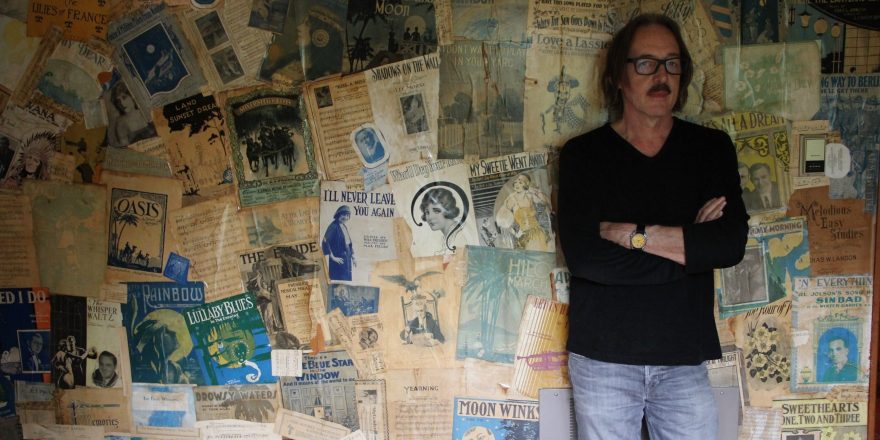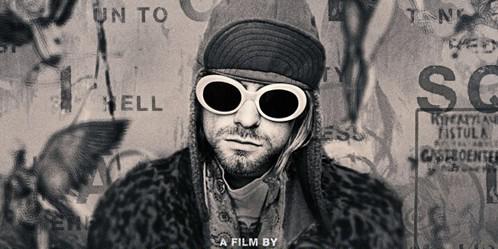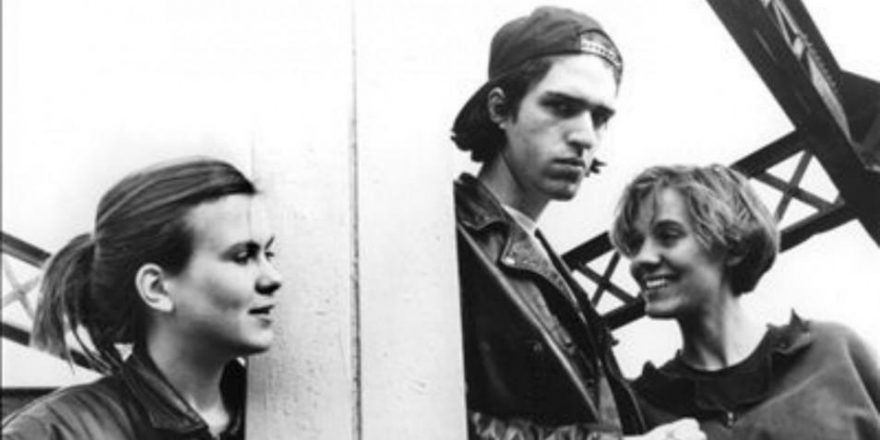Butch Vig’s recording studio—Madison, Wisconsin’s Smart Studios—was the birthplace of dozens of important and influential rock albums in the 1980s, leading to a career in which Vig produced such classics as Nirvana’s Nevermind and Smashing Pumpkins’ Gish. A recent documentary, The Smart Studios Story, tells the scrappy studio’s tale through the lens of the people who worked and created there, and Dirtnap Records just released a second compilation album to accompany the film. Here, Vig discusses each of its tracks—and his unforgettable time at Smart.
—Josh Modell, Talkhouse Executive Editor
TAD, “Jack”
There was a legal skirmish between Sub Pop and a certain corporate entity that didn’t want their product named in this song. I think Sub Pop called it “Jack Asterisk” but I call it “Jack Soft Drink.” TAD were amazing to work with—one of the first bands I worked with Sub Pop on. Tad Doyle himself is a big guy and basically bellowed when he sang. Jonathan from Sub Pop told me that there was a sensitive side to him, and he could actually sing. He’s got a pretty cool voice when he sings, so I encouraged him to sing on 8 Way Santa. It’s still very much a weird, heavy TAD album, but I think it’s one of their best.
“Jack” is a true story where Tad and bunch of his buddies got into a car someplace up in northern Washington. They were driving around drinking Jack in some kind of cola. [Laughs.] And they went out to a lake and were doing donuts and the car broke through the ice. Luckily they all survived, but as you can imagine it was a bit of a fiasco: They had to call a tow truck and then they were in trouble with the law. Lovely guys to work with. When you see them they look scary, like four lumberjacks coming to rip your head off. But they’re actually really sweet, sensitive people.
Cherubs, “Shoofly”
To be fair, I didn’t have a whole lot to do with the day-to-day production on this; I think it was Doug Olson, aka Mr. Colson. I was in the background helping to executive produce. I was starting to multitask a bunch of projects at Smart at the time. Great band, though! I think I had already started early Garbage at that time. I was doing remixes for Nine Inch Nails and Beck and U2 and things like that—that was sort of the spark that started Garbage.
Laughing Hyenas, “Wild Heart”
Absolutely amazing band. Corey Rusk sent them up from Michigan. We’d been doing a bunch of records for Touch and Go at the time and he said they were incredibly powerful live. When they showed up at Smart, they were all really lovely people, super energized and really focused on the work. The way they approach songs had a very primal feel. The rhythm section got these really propulsive, heavy grooves, and Larissa laid down pretty simple guitar parts—mostly these crazy power chords or strumming. And to further up the intensity in the studio we brought in their P.A. and set that up in the tracking room. It was crushingly loud. I couldn’t go into the room when they were playing it; it had to be about 125 or 130 decibels. It was absolutely crushing, and you can hear that on the record.
Die Kreuzen, “Gone Away”
Die Kreuzen were ahead of the curve. They tapped into hard rock and psychedelia and some poppy melodies and really great dynamics. “Gone Away” captures a little bit more of their dreamy psychedelic side. I think it’s one of their best songs. They were just a slight step ahead of the curve of a band like Jane’s Addiction. I think if they had ended up signing to a big label and had time to go in the studio and really work on the writing and the production, they would have made an incredible record. I made a couple of great albums with them, though. They have a great body of work, and “Gone Away” is one of their best.
Killdozer, “Lupus”
I had spent five months in New York recording with my band Fire Town, and it was a very unpleasant experience, but I learned a lot in recording techniques. The engineer who we worked with was amazing. So I spent five months there, and the day after I came back to Madison I went into the studio with Killdozer. Mike Gerald said, “Butch, we don’t really have very good arrangements on the songs. We just have a bunch of riffs and things.” And over a pitcher of beer we wrote down a bunch of things we wanted to do on the record: Mike said accordion, tuba, strings, radio broadcast, a horn section, all these things. “Lupus” has a horn section, which is great.
Mike’s voice is really low, and I would exaggerate that even more when he would record: We would speed the tape up so when we put the tape back to normal speed it would pitch his vocal down even lower, like another two or three steps. Mike didn’t always have the lyrics done. So we recorded “Lupus,” just the guitar, bass, and drums, and then Mike would go sing in the vocal booth. We would turn the lights down in the control room and turn the track up really loud and then solo Mike’s voice. I would sit there with Dan and Bill, the drummer and guitar player. We didn’t know what he was gonna sing, and the first thing out of his mouth was, “Lupus took the life of Flannery O’Connor!” We were peeing ourselves laughing. It just sounded so crazy. Mike asked what he should do at the end, and I said he should just scream that over and over as hard as he could. We did a second take, and he screamed that line over so many times he hyperventilated and blacked out in the booth.
Twelve Point Buck is the record that really put me on the map with places like Sub Pop and with a lot of bands, like Nirvana and Smashing Pumpkins. Even though it’s a very acquired taste, it connected with a lot of people. And that was sort of the start of my career trajectory. Killdozer opened a lot of doors. And we felt so free recording Twelve Point Buck. Like I said, I had had that experience with Fire Town, and all of sudden we’re in the studio and we can do whatever we want, plus drink beer all day long.
Crucifucks, “Wisconsin”
“Wisconsin” is sort of a detour sonically for Crucifucks. It definitely had more folky elements to it. We had just put in the new tracking room at Smart, and Steve [Marker] and I were frantically wiring for like a week before they got there. They were the guinea pig for all of the new wiring lines and new mics and things. Their name is… It’s not going to go over so well in the conservative suburbs of this country. That song is the title track from their record. I think it fit in really well with Doc Dart’s voice because when he sings it’s definitely more like Mike Gerald. It’s a very acquired taste, but there’s a real sensitivity to his voice and I think that really comes across in that album.
Cosmic Psychos, “Dead Roo”
Cosmic Psychos was a really crazy album to record. They came all the way from Australia, and had set up a small U.S. tour around recording. I think we had maybe six days to do the whole record. They were really gregarious, outgoing people, and they had an interesting sound. Billy the drummer had some swing—it wasn’t real hardcore rock drumming. Ross Knight had this Japanese fuzz pedal that just had this buzzsaw sound to it, so pretty much all the songs had a buzzsaw bass sound. Robbie was an amazing guitar player, and also a super sweet, lovely person. Rest in peace.
When they were first running through songs, I heard “Dead Roo” and thought it was really catchy. A filmmaker friend of mine in Wisconsin came by and heard “Dead Roo,” and he said he was shooting a commercial the next day and had some extra time with a crew, and asked if we wanted to make a video for it. So we drove to Milwaukee and shot a video for “Dead Roo.” The video is pretty funny. The other thing I remember—or barely remember—is the Cosmic Psychos drank more beer in six days than anybody in Smart history, even more than Killdozer and some of the Wisconsin bands.
Young Fresh Fellows, “Sitting on a Pitchfork”
Scott McCaughey just wrote these incredible pop songs wrapped up in a little bit of a loose alternative punk. I don’t even know the right term. It had had a real sort of low-key, disarming quality to it. I think we also did this one in six or seven days. Back then when I actually had a quote-unquote budget we’d record for four or five days and I’d have a couple of days to mix.
We spent a lot of time at the Friendly Bar across the street, or they did when I was setting up for another song or getting a guitar tone or something. They would go across the street to the Friendly and get some beer and grilled cheese sandwiches, and they got to know the staff there. When “Sitting on a Pitchfork” came out, I took a seven-inch over and they put it on the jukebox, and it was the number-one played song in the Friendly tavern for about ten years. I can’t tell you how many times I would go in there to get a beer or a bowl of soup or a grilled cheese sandwich and this was playing on the jukebox. I keep in touch with Scott. He played with REM for years and he was really supportive of the Smart Studios documentary. Those guys need to make another record—I heard a rumor that they are.
The Fluid were a band from Denver and they were sent to me from Jonathan at Sub Pop. Amazingly powerful. John Robinson was an absolute star on vocals. They had an MC5 vibe to them, very high adrenaline. Garrett the drummer could play these machine gun snare fills like nobody’s business. They were really wild on stage and John was very uninhibited as a lead singer.
Gumball, “Accelerator”
Don Fleming and company. I kind of got talked into producing Gumball by Kim Gordon. I was producing Sonic Youth in New York City, and Kim kept saying, “You’ve got to work with Gumball, they’re awesome!” I really hit it off with Don. I had an idea that we could record in a barn about 20 miles north of Madison, so indeed we tracked in a barn up by Columbus, Wisconsin. I loved the sound in there. I hung up a bunch of blankets in the room just to dampen down the cement, and set up a board in there and used headphones basically to track them. We recorded the whole thing in the barn and brought it back to Smart to mix.
It was a really fun record to make—I know I keep saying that, but they were all fun because back in the day there was no interference from management or label people. We would just do whatever the fuck we wanted.
I’ve never known a band that smoked as much weed as Gumball. I didn’t smoke, but I swear to God I was high half the time just from the cloud of reefer madness floating through. They were also interested in Wisconsin culture so besides recording, they were going to weird museums not just in Madison but around Madison.
Because Kim had asked me to record Gumball, I called up Sonic Youth and asked if they would do a remix of one of the tracks, and Thurston Moore said he would. He took the mix I gave him and he put on a cassette and dubbed it a hundred times. And then he said, “Here’s your remix.” [Laughs.] It sounded like shit, totally blown out. You could barely tell what it was, but it was a great idea. “I’ll dub it a hundred times and here’s your remix.”
Don was very kind to give me the driver’s seat, because he’s a renowned producer—Teenage Fanclub and a ton of other records, and he really knew his way around the studio. But he deferred to me and said, “I just want to play guitar and sing and get stoned.” I think it was a bit of a holiday for him.
Urge Overkill, “Faroutski”
Corey Rusk sent me their earlier recordings and he said they like to indulge in odd experiments in the studio, which I encourage. But he said you have to rein them in and make sure that the songs are somewhat focused. We recorded the record in about a week, and unbeknownst to me I think Nate and Ed took a lot of LSD that week because they were acting very strange in the studio. There were some very unusual moments. I’d have to listen to a take several times to sort of get my head around what they were doing, but in the end I think that’s what makes Americruiser a really interesting album.
When we finished the album and mixed it, the band drove back Chicago and I was going to send the master tapes to Corey the next day. I got a call from Nate, and he said, “Don’t send the album to Touch and Go. I want you to burn the tapes. I want you to promise me you’ll burn the tapes.”
I said I’d think about it. I told him I thought we should call Corey first. He said, “Don’t call Corey. Burn the tapes. We made an album that does not sound like a Touch and Go album. Corey is gonna hate it.” I said we should wait a week, and that if he still hated it, I’d burn the tapes. I hung up the phone and called Corey and told him they wanted to burn the tapes. I sent him the album and he called back in a couple of days and said, “Oh my god, I love the album. Of course it’s a Touch and Go album.” About a month later, after it was mastered, I got a call from Nate and he said, “Thank God you didn’t burn the tapes.” That record is what got them signed to a major label, where they had some success.
The Singing Irishman, “Balloon Man”
There was a knock one day at our studio door, and this guy said, “I’m Michael O’Sullivan, the Singing Irishman, and I’d like to record a song.” We told him it was $25 an hour, and he pulled out a bag of quarters, dimes, and nickels, and said, “I think there’s at least 40 dollars in here.” He put 25 dollars of coins on the table and said he had two songs he’d like to do.
We didn’t know what he was going to do. And he started doing his first song, and Steve and I thought it might be cool if we put some music behind it, but we didn’t have time to really set up a band. But we had an Ensoniq Mirage, one of the first cheap samplers, and they had these really cheesy demo songs. There’d be a beat and a bass, so we roll with this music. He was in the vocal booth and I cued him and he did “Balloon Man.” When it was done he came in and said, “That was the most incredible experience I’ve ever had.” Over the course of a couple years we did maybe eight songs.
He would come in unexpectedly and we’d fire up the Ensoniq and have him put his magic down. He became sort of a spokesman for Smart Studios; we put out these compilations called “Not For Geeks” and we’d put his songs on there. He’s a lovely person, kind of an institution in Madison.
As told to Josh Modell.







